|
And that's why we need more than just time to heal all wounds 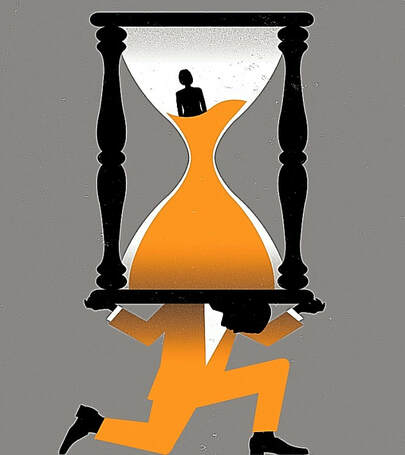 by Lydia Waruszynski, M.Ed No matter how much our past remains behind us, it still has a way of slipping into our present. It’s normal that we carry our personal perception of our past experiences with us, especially when it comes to our love relationships. However, sometimes the weight of certain memories can be downright debilitating and feel more like emotional quicksand. When this happens, it usually means you probably avoided or underestimated the significance of the pain you suffered in the past. Unpacking your hurt, fears and triggers while assessing your needs for healing becomes essential in order to be able to move forward more freely and feel like you can take back your life again. Once vulnerabilities are identified and old energy is released, not only are you inspired to move forward or enter relationships with more confidence, it encourages you to grow more authentically, too. Ignored, it remains a surefire way of keeping you stuck in your status quo, blocking the flow of change, and allowing familiarity to repeat in the future. “How frightening is the past that awaits us”. Antoni Słonimski Our emotional health is a critical part of well-being. Our feelings are important, whether we think of them as good or bad. In fact, we really need to understand that our feelings provide us with the stories we tell ourselves and what we bring into our intimate relationships. Because we often make assumptions based on our emotional history, we often unconsciously transfer onto our partners what we experienced or felt we were dealt in the past. Too often what happens is we blame each other for what goes wrong in the relationship and fail to see the link between our personal lifelong conflicts and the conflicts in our relationships- between the pain or hurt we carry within ourselves and the pain or hurt we experience as a couple. Emotions are like that: every time we have an experience in the present, we are also experiencing it in the past. This is why gaining a better awareness of the way relationships and emotions were handled in our family of origin is always a good idea. After all, our family of origin is the first place we learned about love. So, too, our expectations around love. This is where we learned about communication and also about what troubled us about our family dynamics -especially around core issues involving anger, fear and hurt. Exploring our personal history can help us understand what from our painful past may be trickling into the present. Ultimately, through shared conversation, we can stay connected to ourselves while we try to stay connected to each other, and not feel like we are collapsing under some enormous emotional weight whenever we try to communicate. Living in the moment in this way not only helps foster awareness and facilitate choice, it also teaches you what may no longer serve you and, most importantly, the (new) direction you need to take. Letting go of the past is a process & learning to let go takes practice All of us are capable of having a loving relationship, but it does take some effort, especially the willingness to be uncomfortable with our feelings. Our vulnerabilities are the fragile feelings usually left over from our painful past, particularly the stuff which keeps us up in the middle of the night and that very few people, if any at all, really know about. However, the only real way of dealing with these type of feelings is to feel them, identify and open up with them. In a relationship, it can mean the difference between being fully heard and seen -and staying grounded in the present in response to your partner- or remaining wounded and walled-off, continuing to be plagued by -and react to events of- your past. It can mean lightening the emotional load by finally realizing that perhaps it’s not the load that breaks us down, rather it’s the way we carry it. The following is an exercise couples explore in my workshop called Family Matters. Asking each other these questions can help us listen to and acknowledge one another -especially our unique emotional history- creating a bridge between the past and present, between the self and other- and profoundly discover a new truth together… in present time. My Story+Your Story=Our Story
0 Comments
One of my favourite poems or literary works about love and marriage comes from a prophet by the name of Kahlil Gibran. He writes about the importance of couples coming together in love but not losing sight of who they are individually, and especially their own unique purpose: That people can come together in love and not lay all their expectations at each other’s feet, waiting for them to be fulfilled by the other. In my field we call this differentiation. If truth be known, in our society, we valourize phrases like "I found my soul-mate" or “you complete me” and “my better half” much more than “stand together yet not too near together”. Yet, the latter is a much more healthy option. Why? When we know who we are, and are able to stand on our own two feet, own our own thoughts and feelings and clearly express them to one another- without expressly resorting to hurting each other- not only do we muster up the skill of authenticity, we also pave the road for living a life with more curiosity, meaning and compassion. I believe KG really understood what it meant to be able to add to someone's life and to grow in marriage.
by Lydia Waruszynski, M.Ed When couples fight they often don’t realize that they have set up a pattern between them. The pursuer-distancer pattern is the most common conflict or power struggle couples find themselves in. Here’s what it looks like:
Jane: “Why do you always do that?” John: “Do what?” Jane: “You ignore me. Everything is more important to you than me.” John: “No, it’s not.” Jane: “We need to talk about this. You’re doing it now.” John: “I don’t see the problem. You’re over-reacting.” Jane: “No, I’m not!” John: “I don’t want to talk about this anymore.”(S.Horsmon) In this example Jane is the pursuer and John is the distancer. Jane feels anxious about the distance she feels in her relationship and aims for connection while John feels the pressure, and tries to distract himself from his own anxiety- by pulling away. Although neither one is inherently right or wrong, it’s still a lose-lose situation. And the worst part is that it can destroy a relationship. Unless both parties see-and understand- the pattern. In order to change your part in the pursuer-distancer dance, you need to first understand the characteristics of each style. Pursuers tend to:
Distancers tend to:
The Problem is not so much the People- as it is the Pattern Even in healthy relationships, couples fail to see how entrenched they can become with each other when dealing with relationship stress. And, this is usually because they are too caught up in their own perspectives to even notice each other’s different styles and underlying needs. Many do not recognize their unhealthy relationship habits. Couples often assume the conflict has more to do with their partner, and not the pattern. Likewise, they fail to see how this very belief can lead to even more sabotage in their connection: while both partners attempt to control the interaction to manage their own anxiety (fears of being too separate vs. too close) decreased affection and emotional responsiveness now hems them in even deeper. In fact, feeling vulnerable and alone becomes the very thing fuelling their interactional pattern: pursuing partners feel controlled -and unloved- by their withholding partner while distancing partners feel controlled -and unloved- by their nagging mate. Each person’s position and reaction reinforces the position of the other. A Catch 22. Knowing Me is Knowing You…aha! Relationship connection begins by each partner claiming their own moves of the pattern. Discovering who you are in all of your own unique history and extending the same to your partner is the place to begin. So, instead of focusing on what your partner is doing to you, figure out what’s going on inside of you. Mend your own garden. For example, having conversations with the following questions in mind can help you cultivate more compassion and understanding about how your earlier life experiences or upbringing may have affected your current attachment style or pattern with each other: What was my experience of love and trust as a child? Could I trust my parents were always there for me? Or, did I mostly feel like I had to take care of them? Did I turn to them for protection? Or, did I fear them in some way? Did I feel rejected? Neglected? Abandoned? Smothered with attention? How did my parents show me they loved me? Could I count on them for affection? Hugs? Attention? Did they comfort or soothe me when I needed it? Or did I mostly count on myself, having learned not to expect too much? What was this experience for me like? What, if anything, does this reveal about myself and the way I can get triggered up with you, today? Emotions or History Reveal the Pattern…and change the course! We all want a partner who can serve as a source of comfort and security. But shaming or blaming our partner into it rarely works. Wanting change is about making the choice to become a better partner. Goodwill: a win-win situation. Showing up as a supportive partner for each other requires each person examine their own emotional needs first. Pointing the finger at our partner just allows us to get more embroiled in our one-sidedness, pushing us further and further emotionally apart. Finding the source of our pain or suffering, however, may get us more of a conscious response that connects and reassures, ultimately helping us recognize the impact this has on our partner, and the necessity of working toward satisfying both needs: a balance between solitude and connection. Just as with a butterfly, it’s about the power of personal transformation. When you think about it, our lives are made up of stories. We all walk around with personal narratives related to our experiences with people, places and events. Some stories are happy, some are sad, some are incredible, some are just plain ordinary. Some stories we share, others we store privately. Regardless, stories give us meaning and identity and even help organize and understand our lives. Some of the best stories -and life lessons- come from our family of origin. Our family of origin is the place we grew up in- the people largely responsible for shaping our beliefs, values, roles and rules as well as guiding our own relationship choices. For better or for worse, it is here where we first learned about love and trust through communication and emotional expression. Sharing our childhood memories, including the painful ones, not only affords us self-reflection but can actually provide us with a sharper lens through which to view love and relationships and even help us evolve to tell a different story, if need be. In marriage and other close relationships, sharing ourselves with each other can nourish the experience of authenticity and intimacy, even help locate the missing pieces to the puzzle of our lives . Healing. Sometimes the hardest story to tell may be your own but it can also help someone else find their voice To tell our personal stories requires vulnerability. This is not always easy as genuine vulnerability requires risking disappointment and hurt. Sharing the negative narratives of our lives means entrusting those we invite to listen with our unique fears, insecurities, struggles, and pain. But the payoff can be great! It can mean the difference between sharing what’s happening in your life versus inviting someone into your life. It can reveal the difference between making it known that one is grappling with certain issues and knowing one is supported by someone really wanting to be there for both the struggle and story. And when the story is unique to one but also speaks to the other, you receive the gift of resonance: meaningful connection. Willingness to stand within our own story -warts and all- takes guts. Allowing our partner to become the steward of our intimate thoughts even more-so. Taking risks on an emotional level helps bring about raw conversations about the things that really matter, enabling us to open to our truth within and to new possibilities, too. Empowerment. And, whenever love speaks and listens vulnerably, you already know you have a true love story.
 Navigating high school romance is never easy. Adolescence is that developmental -and experimental- stage where crushes and romantic love can often seem sporadic or not even last very long. And, while break-ups and broken hearts are difficult at any age when it comes to love, they can be particularly devastating during the turbulent teenage years. After all, there are many intense emotions (and surging hormones) involved as teens try to figure out life for themselves, especially while dating. Feelings can even be more distressing for teenagers because of how they process and handle failed romantic relationships. Knowing how to do so with integrity, however, allows adolescents not only to mature but also to build many important interpersonal skills they will eventually carry into adulthood. It’s part of developing healthy self-esteem and self-worth, and a sexual identity, too. A problematic trend in the present dating world is called ghosting. And, for the record, not only teenagers do it. Ghosting happens when the person you thought you were dating suddenly stops responding to your calls, emails and texts (or blocks you completely) with no apparent explanation or warning, unilaterally ending the relationship and disappearing into thin air. Poof! Gone! Deleted! The cutoff just happens and the person being ghosted is often left in shock, literally haunted by what happened. Not only is it disrespectful, but also heartless and a cowardly way of ending a relationship and, sadly, becoming more and more commonplace in the digital age. The only thing worse than saying “I don’t feel the same way”, is not saying anything at all. Aside from abruptly cutting yourself off from someone who is a threat to your well-being, ending a relationship by ignoring a human being is just plain wrong. Providing a reason and establishing closure is fair and should always be done face-to-face. Accountability. A relationship, no matter how long it lasted, somehow mattered. People matter. And, if you don’t believe that, you are also setting yourself up for failure. How? The very same screen you use to hide behind as an easy way out, (even if you convince yourself it’s more about not hurting someone’s feelings) impedes the social skills required for relationship success: maturity and conversation. Avoiding life’s challenges, conflict or confusion, disappointment, pain and loss only exacerbates uncomfortable situations and the vicissitudes of life that much more. Acknowledging them actually helps build empathy. What many ghosters fail to see is that much of the relationship anxiety they also feel is actually perpetuated by the false sense of security and control they think their device offers. Running away from situations or problems is never a healthy coping skill. Often the harder thing to do and the right thing to do are the same. To hear more tips and techniques about good communication skills please go to Love On the Run with Lydia -a relationships podcast at www.letstalkaboutlove.ca originally written for YA Magazine Have you or your partner ever experienced infidelity? Did it feel like the ultimate betrayal? Were you able to heal through it? If not, perhaps you were unaware as to how to even begin to navigate all of the complexities inherent to understanding infidelity, nor ever had the opportunity to have the right conversations and guidance in order to be able to do so. One thing for sure, understanding affairs and betrayal beyond the perpetrator-victim perspective is essential, if true healing is ever to take place.
I often meet with couples who are dealing with the aftermath or crisis of an affair. My priority is to provide them with a safe and gentle restorative setting. My objective is to help them discover the reason behind the affair. Often the difficulty lies in discerning -and accepting- the duality of the meaning, as in “what the affair did to you and what it meant to me”. It’s never easy but these are important conversations to be had, nevertheless. Following are some essential points to consider whenever choosing to rebuild trust, healing and getting past an affair:
2. The partner who had the affair needs to want to learn what to do in order to rebuild and restore trust, which includes “putting up” with their partner’s in- cessant pain. To be sure, there are no quick fixes here, and only the passage of caring acts and compassionate experiences will help make peace with the past. Accountability, remorse, responsibility and sensitivity are key! Hard as it may be, the hurt partner also needs to focus back on the relationship and learn how to steer away from their obsession with the lover. Both need to choose the relationship, even if one feels totally not responsible for the affair. 3. Making meanings out of the motives will only come about from those couple conversations which consist of integrating the infidelity or transgression into the narrative of the couple relationship. To do so requires knowing how to move the conversation from an investigative quest-such as rifling through emails and text messages- to one of exploration- embarking upon a quest to understand the meaning of fear and loss, separateness and togetherness, love and desire, longing and loneliness…all important discussion themes when unpacking the meaning of an affair, but also part of a much needed awakening, especially if deciding to forge a brand new meaning of your couple connection and life together. Understanding infidelity is often a complicated state of affairs. “People stray for many reasons - tainted love, revenge, unfulfilled longings, and plain old lust. At times, an affair is a quest for intensity, a rebellion against the confines of matrimony. An illicit liaison can be catastrophic, but it can also be liberating, a source of strength, a healing. And frequently it's all these things at once. Some affairs are acts of resistance; others happen when we offer no resistance at all. Straying can sound an alarm for the marriage, signalling an urgent need to pay attention to what ails it. Or it can be the death knell that follows a relationship's last gasping breath. I tell my patients that most of us in the West today will have two or three marriages or committed relationships in our lifetimes. For those daring enough to try, they may find themselves having all of them with the same person. An affair may spell the end of a first marriage, as well as the beginning of a new one.” (Esther Perel, 2017)  The Invitation By Oriah Mountain Dreamer It doesn't interest me what you do for a living. I want to know what you ache for and if you dare to dream of meeting your heart's longing. It doesn't interest me how old you are. I want to know if you will risk looking like a fool for love for your dream for the adventure of being alive. It doesn't interest me what planets are squaring your moon... I want to know if you have touched the centre of your own sorrow if you have been opened by life's betrayals or have become shrivelled and closed from fear of further pain. I want to know if you can sit with pain mine or your own without moving to hide it or fade it or fix it. I want to know if you can be with joy mine or your own if you can dance with wildness and let the ecstasy fill you to the tips of your fingers and toes without cautioning us to be careful to be realistic to remember the limitations of being human. It doesn't interest me if the story you are telling me is true. I want to know if you can disappoint another to be true to yourself. If you can bear the accusation of betrayal and not betray your own soul. If you can be faithless and therefore trustworthy. I want to know if you can see Beauty even when it is not pretty every day. And if you can source your own life from its presence. I want to know if you can live with failure yours and mine and still stand at the edge of the lake and shout to the silver of the full moon, "Yes." It doesn't interest me to know where you live or how much money you have. I want to know if you can get up after the night of grief and despair weary and bruised to the bone and do what needs to be done to feed the children. It doesn't interest me who you know or how you came to be here. I want to know if you will stand in the centre of the fire with me and not shrink back. It doesn't interest me where or what or with whom you have studied. I want to know what sustains you from the inside when all else falls away. I want to know if you can be alone with yourself and if you truly like the company you keep in the empty moments. One of my favourite poems about authenticity and intimacy. Happy reading! 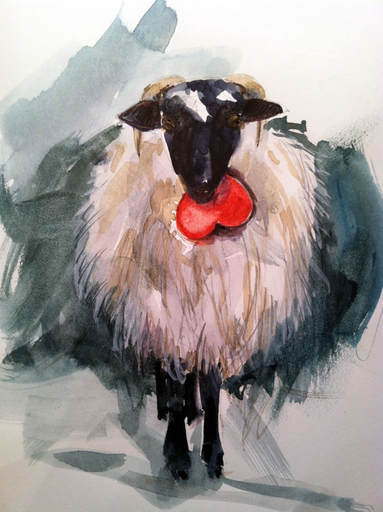 It’s baaaaaack! Valentine’s Day is upon us! Love is in the air again! I don’t know about you but my inbox has been replete with cupids, candy, flowers and sexy lingerie ads ever since Xmas ended…‘tis yet another season for the urge to splurge, I believe- another opportunity to demonstrate our feelings for each other! However, this time the stakes seem higher as the spotlight shines on romance, love, and desire. And, although joyfully anticipated by many couples as the official romantic holiday of the year, for many others February 14 is frowned upon as the commercialization of love or worse- the dreaded, socially-imposed scheduled day of pressure and disappointment- even heartbreak, loneliness and rejection. Either way, whether we celebrate it or denounce it, Valentine’s Day indelibly reminds us of love, relationships, passion, and, if partnered… our connection. Or lack of. Personally, I think few things in life are more important than enriching our relationships. I also think V-day can serve as a good reminder to re-evaluate -even remedy- our love partnerships, as in give our relationships a critical thinking over. Why? Because happy and healthy relationships are not self-sustaining and require continued effort. How? Mostly through gratitude and good communication, as in conversation. Roses are Red, Violets are Blue, True Love Begins With Sharing What’s Important to YOU! Conversations can actually help us stay on track, navigate challenges and reconnect with each other more consciously. In fact, when put to regular practice, holding conversations can pull us out of routine, ruts and complacency and even help refine and bring back creativity and curiosity to our couple life. Heartened by a new way of being I often encourage my couples to begin their conversations by taking a sentimental snapshot of their relationship…you know, as in reflecting on the good times of our past. “Remember when…” is a great segue into a loving conversation. Or, if feeling stuck in your relationship, taking a look at how your relationship has changed by contemplating with your partner, “We’ve been stuck. I’ve noticed it and I think you have, too. We’re in a rut and I’m wondering how we got here”. The fact is that we all do have a history together, and if we take the time to remind ourselves of the journey, especially the happy times, we stand to increase our intimacy and work on our weak spots together, too. Intimacy is like a true knowing of both self and other. I think most of us want to experience this type of bond with our loved one. So this year, instead of following the crowd, how about you skip the roses and chocolate, and make the day about your couple connection, as in talking and listening kindly to each other in conversation. It can be a sweet start to a rich dialogue and can lead to a whole new discovery about who you each are, what you long for and even help you make a heart-felt connection. Perhaps this Valentine’s day, follow your heart, and get reacquainted instead. Today We Are Connected As No Other Time in History But Are We Better Off in Our Relationships?2/1/2018 Imagine.... *a romantic dinner for two becomes dinner for four, with feelings of closeness snuffed out by accompanying smartphone buzzes, chimes and check-ins on social media *an overworked professional -and parent- is made to be available at all times, tethered to their digital gadgets, often bringing work home and on vacation, much to their own detriment and family life *a teenager breaks up over a text message, avoiding taking proper responsibility for the relationship: removed from coping with heartache which is an essential part of being human and healthy communication *a mother interrupts her playing children just to take a family selfie in hope of getting several ‘likes” from her Facebook friends *a husband habitually turns himself “off” from his wife in bed by turning “on” his tablet instead There’s a term for these type of encounters and it’s called: technoference. Moreover, these concerns add to the growing body of psychological research exploring the overuse and reliance on technology, especially how it is interfering with our daily lives and relationships. In my line of work, it’s one of the hot-button issues facing couples today. In fact, phubbing -or the repeated act of ignoring or snubbing someone by looking at your phone instead of paying attention to the person you’re with- has become the latest phenomenon in couple conflict and communication. Message Communicated- Message Received It seems everyone is staring at some kind of screen these days...and believe me the irony isn’t lost on me as I write this article. However, happy relationships- whether romantic or platonic- are all about authentic face-to-face connection. Fundamentally, we are social creatures whose lives depend on our connections to one another. Most of us are not aware that it’s the history of our meaningful interactions with one another which takes a hit each time we ask more from technology and less from each other. Nor do we realize that we starve our capacity for empathy...quite literally, as our brain becomes neurologically famished, no longer receiving signals required for relational responses and bonding. Human connection brings meaning and purpose into our lives. Significant relationships are not self-sustaining. They require uninterrupted time, shared experiences, affectionate touch, attention -as in the human “look them in the eyes” kind. Consistently choosing your phone over your partner sends the implicit message about what you value most. Do the math: the more time we spend with our gadgets, the less time we make for each other. Digital communications do not build deeper connections...people do. So, it is in our best interest to set aside time where we unplug and connect with what really matters. It’s not about being anti-technology, it’s about being pro- conversation. Today, world-wide, we are webbed in technology, let’s just make sure we don’t feel like we’re worlds apart when it comes to our loving relationships. originally published in Ya Magazine (Vol. 2, Issue 3) |
Hi, I'm Lydia- a modern-day warrior of the heart with a mission to reconcile the mystery and mastery of Love.Archives
February 2024
|
Workshops |
About us
|
|

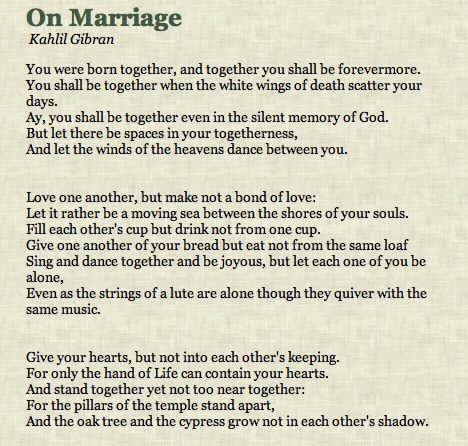


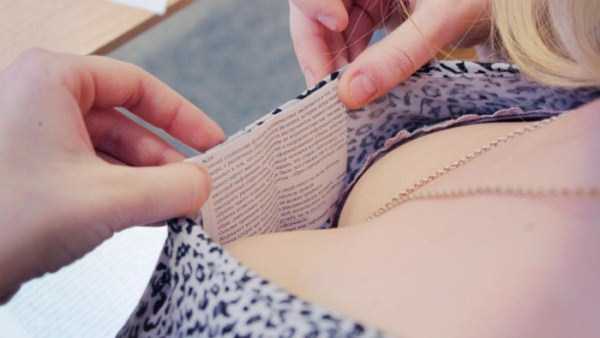
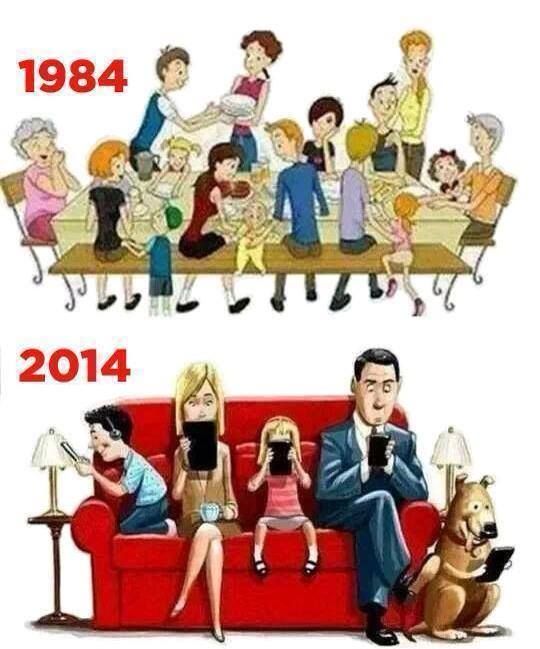
 RSS Feed
RSS Feed